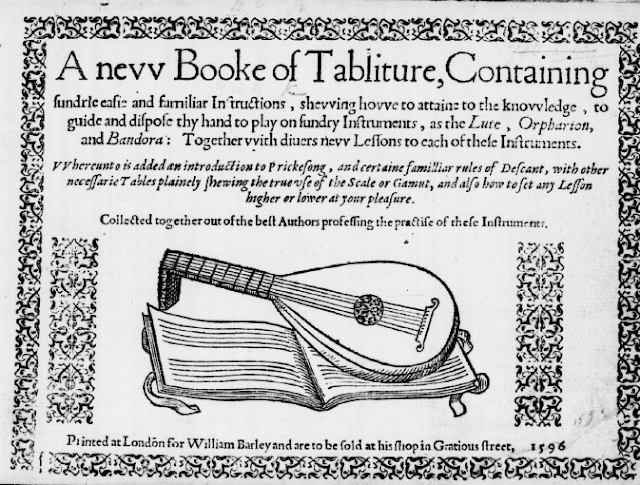 |
| Facsimile of Lothe to departe in the Matthew Holmes Lute Book Can be seen on the Cambridge University Library Website here. |
Dowland made at least two arrangements of the air: this is the easy one, with 5 variations of the 8-bar main theme. There is another version (P69) of 112 bars, in which successive variations diverge further and further from the main melody. Transcribing it for uke will be a job for the long winter nights.
I have attached the original air to the end of the score. (The words are, sadly, lost.) It consists of 16 bars in A A' structure. A' varies from A only in the last 2 bars, and this is where I came across the term Picardy Third: the practice of ending a minor or modal piece in the major mode (i.e. with a major third in the final chord). Practically all the Renaissance pieces in a minor key that I have transcribed do this in the final bar, and usually at the end of each section as well. Either that or they omit the third of the chord altogether (as in the 'power chord' of rock musicians).
Dowland's version of Lothe does this, of course, but the original air (also shown) emphasises the change of mode by sharpening the B-flats to B-natural in the final 2 bars of the melody line – which sounds to my ears rather desolate. (It's very reminiscent of the Coventry Carol.) You can replicate this effect in the uke arrangement by changing the mode in the last 2 bars, and ending on a G-major chord voiced with B-natural on the first string.
Available in the following formats:
pdf (preview)
pdf (automatic download)
TablEdit
MIDI


